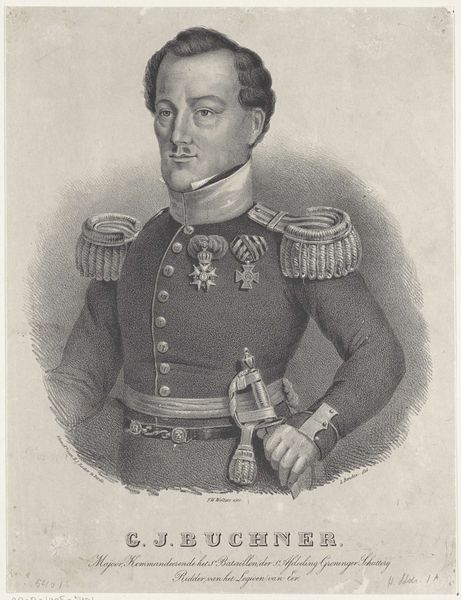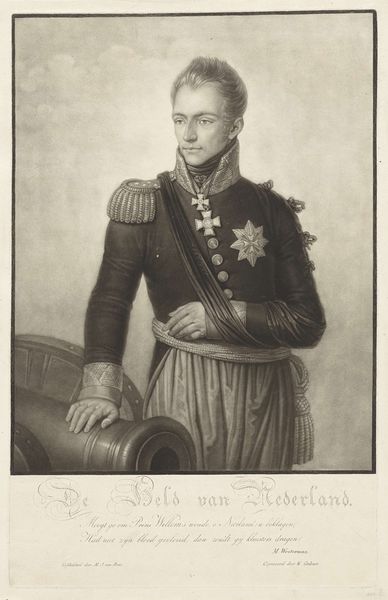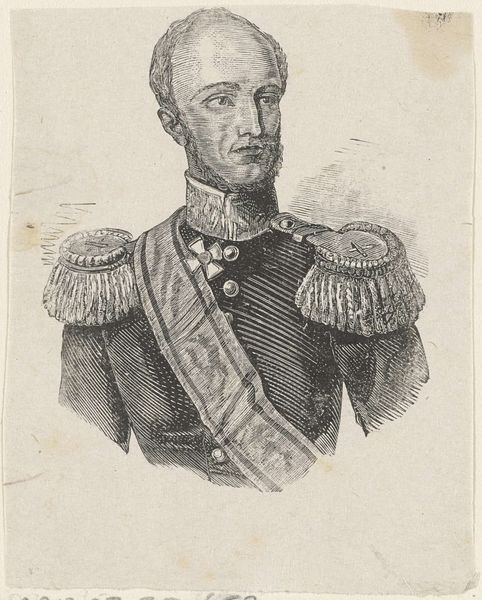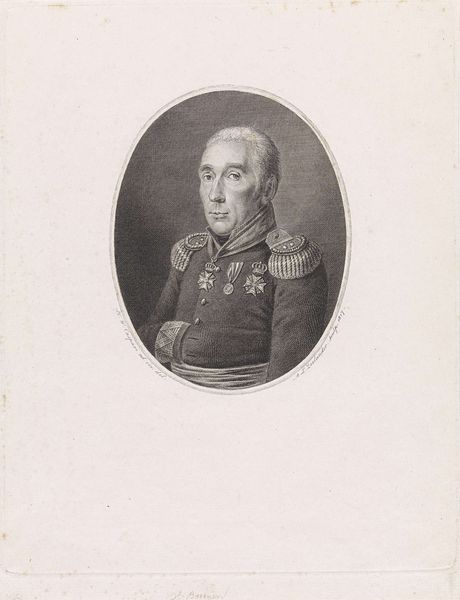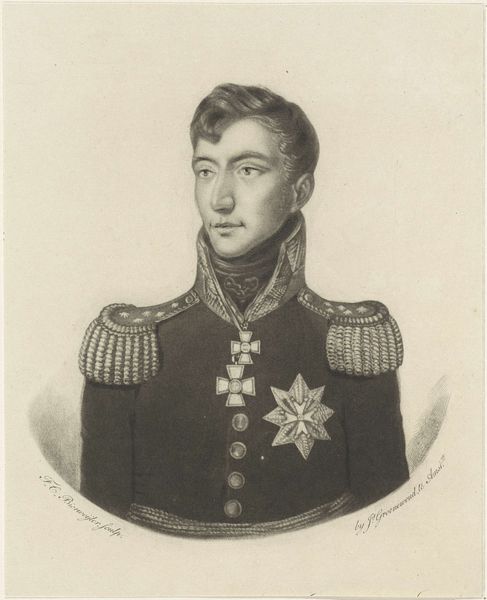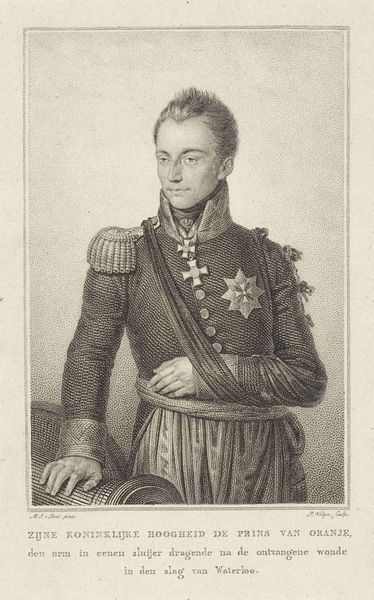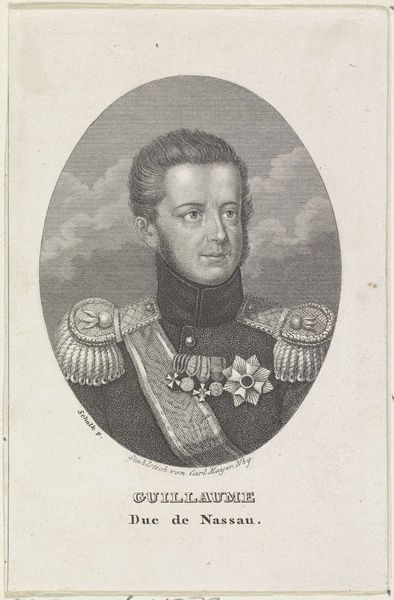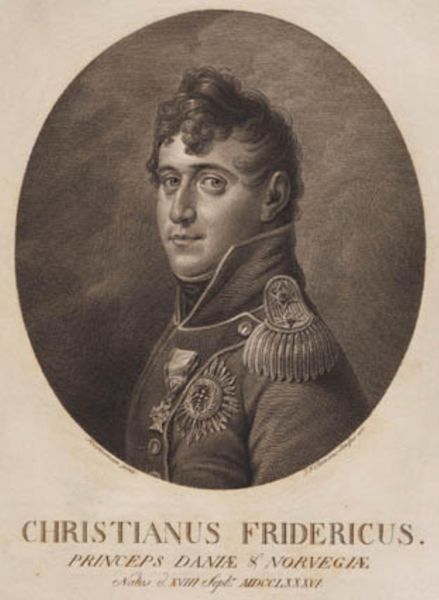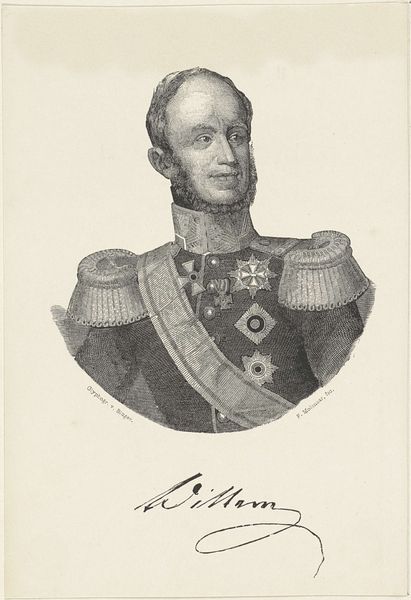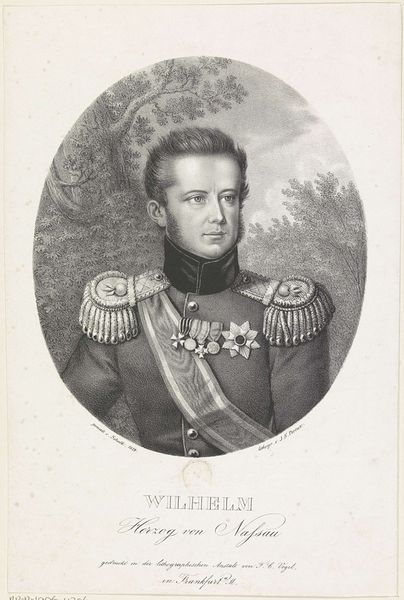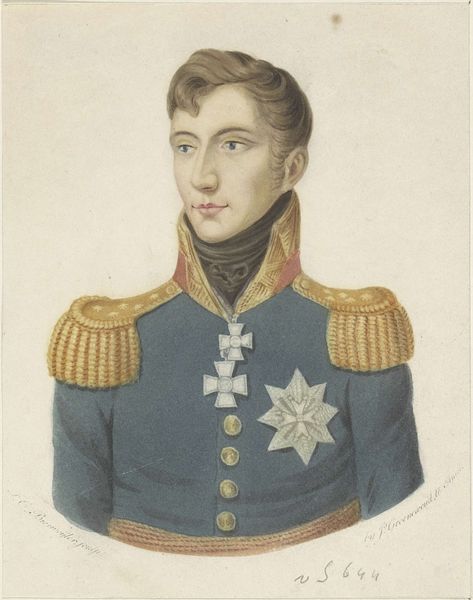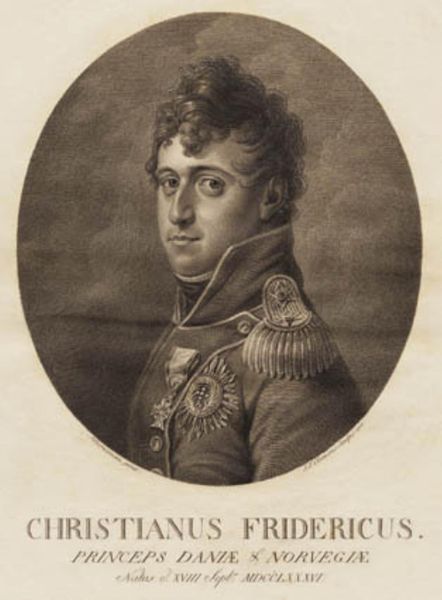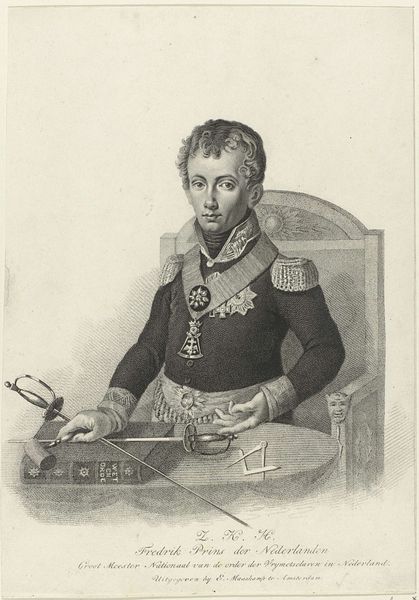
#
pencil drawn
#
wedding photograph
#
photo restoration
#
pencil sketch
#
old engraving style
#
portrait reference
#
pencil drawing
#
old-timey
#
19th century
#
pencil art
Copyright: Public domain
Curator: Here we have what appears to be a print after Orest Kiprensky’s depiction of Grand Duke Nikolai Pavlovich. What strikes you most about this portrait? Editor: The textures, certainly. You can almost feel the wool of the uniform and see the crispness of that lace collar. But tell me more about the man portrayed. Curator: The image reflects the sociopolitical context of the time, it captures a powerful figure. Nikolai Pavlovich would later become Tsar Nicholas I, a controversial figure associated with autocracy. It’s fascinating how the image portrays the subject as almost romantic, in stark contrast with his political image. Editor: Interesting point. I was also drawn to the details of the printing, and the social implications of reproducing images via print. It provided wider distribution than a unique painting. What impact do you think that had on shaping his image? Curator: Absolutely, making him relatable. Reproducing images like this democratized representation. Think about its effect on class consciousness and political awareness—images were tools that legitimized power. Editor: You see power; I also think about craft. Look at the hatching and the clear evidence of manual labor etched into this printing plate. It seems at odds with portraying such a man of power. Curator: Exactly, that contrast invites a reading of the labor relations that sustain the elite. Art-making, then and now, involves multifaceted power dynamics. Editor: Well said. This brief overview has certainly provided insight into the material practices involved in creating this portrait of a complex man, both historically and materially. Curator: Agreed. Thinking about art as a product of both social forces and individual agency expands our understanding of how portraits can reflect identity and power.
Comments
No comments
Be the first to comment and join the conversation on the ultimate creative platform.

